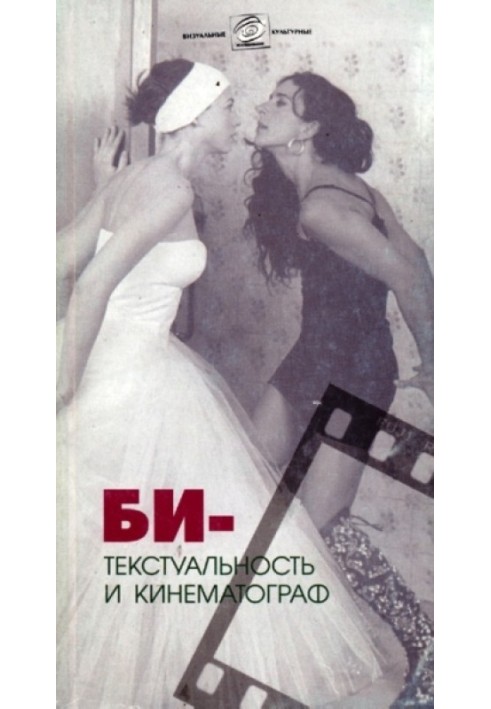Bi-textuality and cinema
 Instant download
Instant download
after payment (24/7)
 Wide range of formats
Wide range of formats
(for all gadgets)
 Full book
Full book
(including for Apple and Android)
Bi-textuality and cinema.
Editor, compiler of the collection and author of the introductory article by A. Usmanova. - Minsk: Propylaea, 2003. - 188 p. - ISBN 985-6329-40-Х
“Bi-textuality and cinema” is the first in many years, in a sense, the first publication in Russian, representing modern Western (you can read scientific ) paradigm of cinematic research. And it represents it not even with translations of classic Western articles, but with the own texts of Russian-speaking authors, located somewhere at the crossroads of cinema studies, cultural studies and gay and lesbian studies. The very appearance of such a collection could be welcomed, regardless of the quality. But fortunately, the level of the publication under review allows us to talk about it seriously, without mentioning the “first pancake” and without fear of causing irreparable damage to the good work that is just beginning. The collection “Bi-textuality and Cinema” was published under the editorship and with the decisive participation of Almira Usmanova, one of the recognized specialists in the field of gender theory. (Natalia Samutina, “Critical Mass”, 2003, No. 3)
The films mentioned and analyzed in this collection, one way or another, come into contact with a rather delicate topic - a topic that our patriarchal culture is still not ready to discuss openly, rejecting its most innocent manifestations (especially in Belarus, where in recent years any manifestations of otherness - from political free-thinking to sexual orientation - are perceived extremely negatively by the dominant ideology: as undermining the foundations of the nation, compromising power, trampling moral norms, contrary to religious traditions). We are talking about the subcultures of gays, lesbians, transvestites and, in general, any forms of “perverse” sexuality, which are often combined under the terms “transgender” or “neosexuality.” Accordingly, one of the objects of study that interests us is polyvalent sexuality, which 3. Freud considered as the “norm” of the subject’s sexual identity. Let me note right away: this theory attracted our attention not so much and not only as a concept explaining the formation of a subject’s sexual/gender identity, but, mainly, as a theory of reading certain cultural texts. (Almira Usmanova)
CONTENTS:
Data sheet
- Name of the Author
- Альмира Усманова Рифовна
- Language
- Russian












